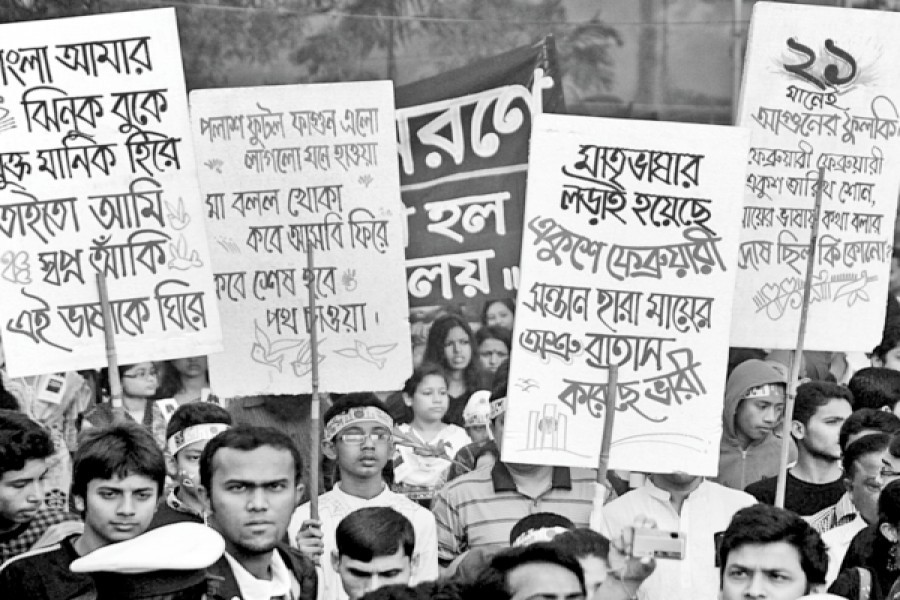The history of any national milestone or event may generate some debates and controversies. In some cases, the extent of the discussion is limited or focused on small areas. Again, the debate may be widespread mainly due to divergent descriptions of the event and different views. Distortions of historical facts and illustrations by vested quarters also spark and widen controversy. So, writing and presenting an objective history of any significant past event is always challenging. The country's historians, researchers and writers have to face the challenge of writing, analysing and presenting the history of the Bangla language movement.
Nevertheless, most of them successfully overcome the challenge with some limitations. Thus the nation gets some quality works on the history of the great movement leading to the Omor Ekushey, or February 21st for its commemoration. The day is now recognised as the International Mother Language Day globally.
It was 71 years ago, and on an eventful day in 1952, the movement reached its peak. Small groups of students from the Dhaka University campus began moving towards the East Pakistan Legislative Assembly Building. The police at first tried to disperse them by charging sticks and firing warning shots. Students defied, and some also began to throw brickbats to the police. Instead of showing some restraint to calm the situation, the police responded by firing several rounds of bullets, resulting in three deaths and scores of injured. The language movement had its first martyrs. In the next few days, there were more protests and demonstrations followed by arrests of leaders and activities. A total of eight sacrificed their lives in the movement, which originated almost immediately after the partition of British India in 1947.
Two independent states - India and Pakistan - emerged as the outcome of the partition. There were two wings of Pakistan - West Pakistan, which is today's Pakistan and East Pakistan, which is today's Bangladesh. Students of the eastern part initiated and led the language movement, which was supported by some of their teachers and a few political leaders. They demanded Bangla as a state language on a par with Urdu in Pakistan. It was not only the demand for upholding the honour of the mother tongue but also for greater autonomy on the province's political, cultural and economic front.
The language movement laid the path to the independence of Bangladesh through the nine-month bloody war in 1971.
Thus, the importance of language movement is vast, and the history needs to be read and understood in the larger contexts and broader perspectives. In this connection, the works of Badruddin Umar, Bashir Al Helal, Abdul Matin and Ahmed Rafique are critical. There are some others also who write and analyse the movement critically. All these provide a good set of resources for greater study. Nevertheless, some people continue to present distorted, biased and fabricated pictures of the movement only to mislead the new generation. To counter the practice, it is necessary to go for broader study of the critical works.
Another important task is to translate the works of language veterans like Abdul Matin and Ahmed Rafique into English and distribute them widely at home and abroad. Many of the new generations in the country have opted for English medium for their education. Similarly, new generations of Bangladeshi origin abroad have almost no access to Bangla. For them, English books are necessary so they can at least know how their forefathers fought and sacrificed to defend the mother tongue and culture.


